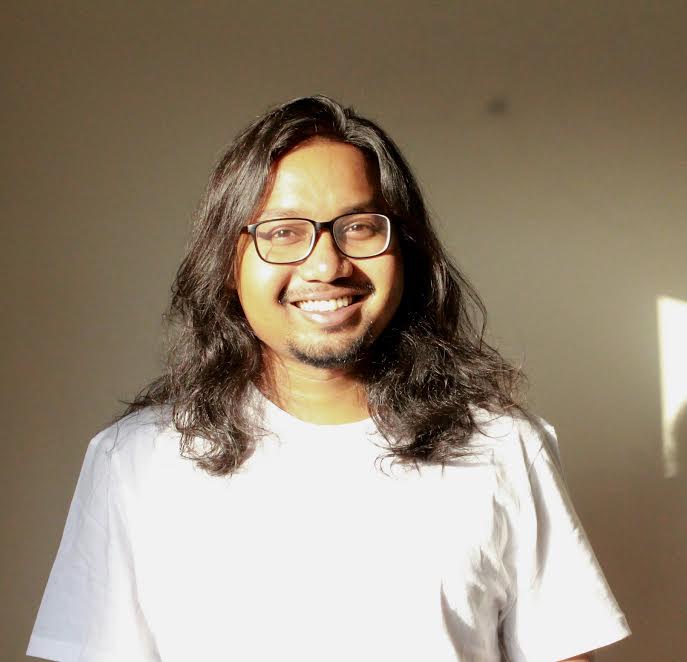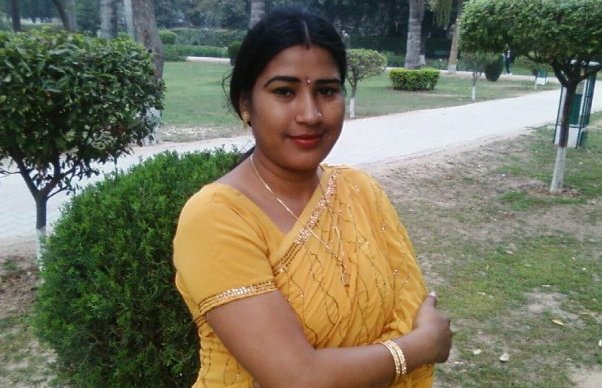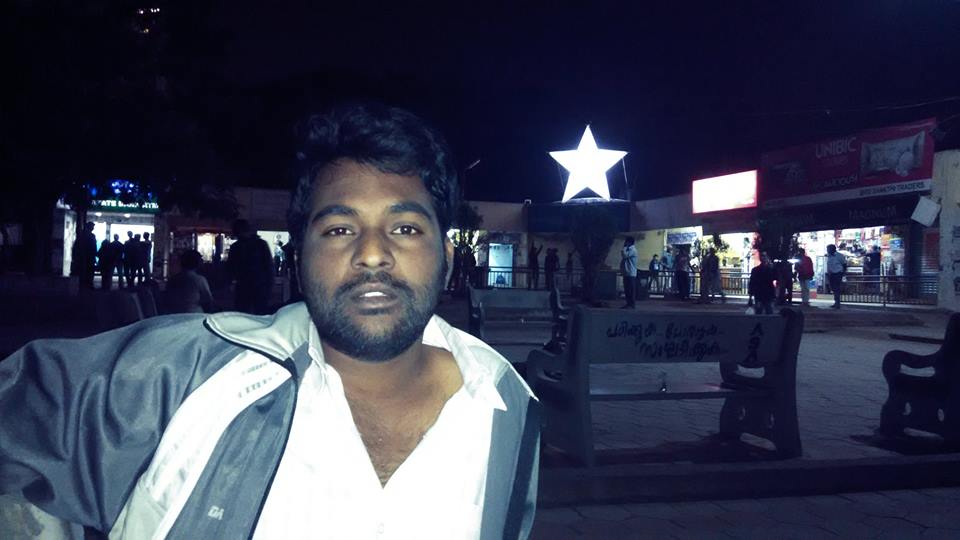Akash Poyam
 When I was first enrolled in school my parents named me ‘Akash Kumar’, this remained until middle school when it was changed to ‘Akash Kumar Prasad’ and it had since then continued. After using ‘Poyam’ for almost a year on social media, I finally decided to officially change it. I belong to the ‘Poyam’ clan – one among the 750 clans of ‘Koitur/Gond’ tribe. Poya in Gondi translates to (dhuan) ‘smoke’ in English and one of the stories behind its origin goes as follows. A long time ago, an epidemic had spread across Koiturs’ territory. Its wrath had taken many lives and no one was able to stop it or find any cure for it. At that point, it was the people from Poya clan who discovered that smoke (from burning leaves of a forest plant) could cure that disease. They travelled across villages and helped end the epidemic disease. Their relation with medicinal ‘smoke’ got them the name ‘poya’. (As narrated by elders to me in Kondagaon-Bastar during Bade Dongar Jatra.) In this article, I’d like to share the history of my region and community that alienated us from our clan name and instead made us adopt surname/s (Prasad/Singh etc) that in no way represented our Adivasi ancestry and identity.
When I was first enrolled in school my parents named me ‘Akash Kumar’, this remained until middle school when it was changed to ‘Akash Kumar Prasad’ and it had since then continued. After using ‘Poyam’ for almost a year on social media, I finally decided to officially change it. I belong to the ‘Poyam’ clan – one among the 750 clans of ‘Koitur/Gond’ tribe. Poya in Gondi translates to (dhuan) ‘smoke’ in English and one of the stories behind its origin goes as follows. A long time ago, an epidemic had spread across Koiturs’ territory. Its wrath had taken many lives and no one was able to stop it or find any cure for it. At that point, it was the people from Poya clan who discovered that smoke (from burning leaves of a forest plant) could cure that disease. They travelled across villages and helped end the epidemic disease. Their relation with medicinal ‘smoke’ got them the name ‘poya’. (As narrated by elders to me in Kondagaon-Bastar during Bade Dongar Jatra.) In this article, I’d like to share the history of my region and community that alienated us from our clan name and instead made us adopt surname/s (Prasad/Singh etc) that in no way represented our Adivasi ancestry and identity.
My village Nawki is in Balrampur district (erstwhile Surguja) – the northern most part of Chhattisgarh that shares its border with UP and Jharkhand. The region had seen the intrusion of Brahminism probably earliest in the state. Brahmins had started flocking in from UP, Bihar into the area probably by end of 19th C. In many Koitur songs we find reference to this ‘caution’ e.g.
‘Bomna naa fandaate, geerja naa kundaate,
hile hanwa dada hile hanwa ro.
Sambhoo-na sangete Lingo-na pangete,
hile marungwa dada hile marungwa ro.’
This roughly translates to ‘Do not be deceived by Brahmins brother, do not fall into the pit of other caste (Hindus)… Do not forget the songs of Sambhoo brother, do not forget the teachings of Lingo’ [Sambhoo and Lingo are considered Dharm gurus of Koiturs]
Anti Brahminical articulations and the aim of safeguarding Koitur culture finally led to the formation of ‘Gondwana Mahasabha’ in 1916. Mahasabha assemblies between 1916-45 consistently cautioned about the threat of Brahmins, imposition of Hindu laws etc. The Gondwana Mahasabha – Mandala assembly of 1945 stated that “….since our community is caught in the clutches of other religions, if India gets independence tomorrow, only Christians will leave. But the colonizers of our land, culture and civilization- ‘the Hindus’ are going to stay and will continue exploiting us. Then what is going to be the benefit from freedom of this country?” (Kangali, 1986)
By 1951 a movement led by ‘Rajmohini Devi’ had started in Surguja– it was supported by Congress that propagated Hinduism, Nationalism and Gandhian ideology. It also bared many similarities with ‘Tana Bhagat movement’ of 1920s. Rajmohini Devi Movement functioned through Bapu Dharm Sabha and called for – abandoning consumption of mahua and brewing liquor, giving up meat, worshiping cow, keeping away from dewar (traditional medicine man), wearing Khaddar, following non violence and teachings of Mahatma Gandhi etc. Rajmohini Devi was a Gond woman, who according to historians had a dream of Mahatma, who told her to follow his teachings in order to get rid of hunger, starvation at the time of severe drought in the region during 1950s. Soon she had become a popular figure with thousands of followers, and established more than 30 ashrams in the region for promotion of her teachings (at least 20 ashrams are still functioning). During the movement, village deities were ‘purified’ and converted into ‘Bhagats’ – thus ‘converting’ villages after villages. Adivasi community thus got fractioned into Bhagats and Sagats – Bhagats who followed Rajmohini’s teachings and Sagats who did not. This further caused antagonism and restricted marriage alliances between the two.
All ancestral places of worship in various hills, over time were turned into ‘temples’ (with idols, statues – whereas Koiturs are nature worshipers and do not believe in idol worship) and Baiga (traditional priest) was gradually replaced by Brahmins. The Koitur origin and history of these gadh/gudas has been documented in detail by Dr. Motiravan Kangali and can be contrasted with ongoing practices in these places. Brahmins even propagated practice of wearing ‘Janeau’ among Adivasis, that is still in practice among men of that generation. [In a similar event, in September this year, Gayatri Pariwar organized a program in Badwani, M.P. – where 2000 Adivasis were given ‘Janeau’.] This process of ‘purification’ also symbolically ‘raised the status’ of Adivasis, and they became higher than ‘Ghasia’ (a Dalit community- also culturally rooted with Koiturs) in social hierarchy– thus practice of untouchability became integral part of village community. In 1952, Vanvasi Kalyan Ashram (VKA) was started by RSS in our neighbouring district Jashpur, apparently as a response to the growing influence of Christian Missionaries in the region. VKA promoted Hinduism through various campaigns and cultural programs that we grew up seeing in our village (theater and music programs about Hindu mythologies Ramayana, Mahabharata). Sarswati Shishu Mandir (run by RSS) was the only school nearby, other than government primary school, so many of us were enrolled to SSM. VKA presence in the region facilitated this process of ‘assimilation’ in upcoming years.
My great grandfather was a village tribal chief, who had generously given land to Brahmin, Bania migrants from UP, Bihar (who now occupy the major share of land/economy in the region). He was also the one who initially resisted Rajmohini Devi from entering our village but later became the first follower of Hinduism in the family, for reasons unknown to me yet. This did not however mean complete giving away of our traditional Adivasi rituals and practices, but few elements of Hinduism became part of our culture. Moreover, people started identifying themselves as ‘Hindus’, even though our ancestors practiced and followed ‘Koya Punem’ – Koiturs belief system (their own “religion”). The state policies and VKA programs socialized people to believe that Hinduism is a ‘higher’ form of culture and we needed to give away our ‘primitive’ ways of living. My grandfather, a firm believer of Hinduism thus did not carry our clan name and the same continued with me, while some used ‘shandilya’ others over time started using surnames like ‘singh’ – both of which did not correspond to our Poyam ancestry.
Since the surname ‘Prasad’ did not reveal my ‘caste’ identity, for most of my educational journey, teachers & students did not identify me as Adivasi and I rarely revealed it, knowing its consequences. I knew about our clan but did not know why we didn’t use it after our names. When I was enrolled for middle school in a town, few classmates of mine often laughed at my inability to speak ‘shuddh’ Hindi, I also got bullied after mentioning ‘poya’ name. While teasing and calling names could have been a joke, thereon I could never gather courage to mention my surname again. It was only during my MA, I was fortunate to meet and interact with Koitur elders from other regions. Dr Kangali’s books, Adivasi and Ambedkarite literature were not only empowering but also made me aware of the deep rooted oppression Brahminism caused to us and helped me to proudly assert my own Adivasi ancestry. Adivasi surnames are not mere surnames but represent clan ancestry; they signify our social location within tribe, they help identify and manage kinship relations, moreover they carry undocumented histories of the community and enable us to make sense of our past. And today, however small this act of changing surname might have been, it feels liberating.
References:
Kangali, Motiravan (1983), Gond Vasiyon Ka Mul Niwas Sthal, (Nagpur: Tirumay Chitralekha Kangali Publications).
Kangali, Motiravan (1986), Paari Kupaar Lingo: Gondi Punem Darshan, (Nagpur: Tirumay Chitralekha Kangali Publications).
~~~
Akash Poyam is founder/editor of adivasiresurgence.com- a news, media website engaging with various aspects of Adivasi/Tribal lives. He is MPhil research scholar at Department of Sociology, University of Hyderabad.










